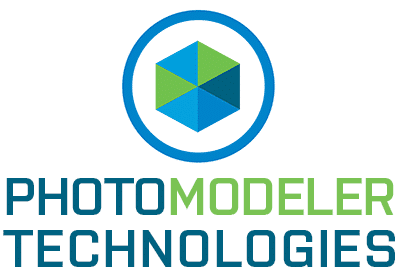What is New for PhotoModeler 2022 Newsletter
Hello,
We have some exciting improvements in PhotoModeler for 2022. Version 2022.0 had over 60 improvements, and version 2022.1 (released Feb 16th) had over 50 improvements. As well, a recent 2022.1.1 release fixed a problem with SmartOrient processing introduced in the previous release.
While many of the improvements apply to multiple application areas, each of these releases had a focus. 2022.0 focused on features used in fabrication, marine jobs, and decking, while 2022.1 focused on features used in forensics and accident reconstruction. There were many smaller improvements and bugs fixed in both releases that help everyone.
2022.0
The 2022.0 release had several changes that help with Coded Target and Surface Draw projects (such as those used in fabrication and marine).
- Default project layers: Do you do the same sort of project over and over and use the same layers in these projects? Default layers will set up your new projects with your predefined layers to speed things up.
- Photo mark size: You can now control the size of the mark symbols on photos which can make them easier to see and help for high-resolution screens.
- Coordinate system fallback: When using the Letter Sheets to automatically set up your project’s rotation, PhotoModeler will now fall back to other sheets (B, C, etc.) if sheet A is missing.
- Surface Drawing Ease of Use: While in Surface Draw Line or Curve mode, existing Surface Draw points can be moved by clicking and dragging them. This makes it easy to adjust/edit points that were just drawn.
2022.1
The 2022.1 release had several changes to improve the handling of external and internal point clouds in Premium. Several improvements help those in forensics and accident reconstruction.
One of the more significant features is Import Pinning to Surface Draw. We have a great video demonstrating the use of Import Pinning on Surfaces. This example uses two different LIDAR point clouds and uses a photo from a TeslaCam dashcam to place another vehicle in the scene cloud and determine its speed. See the Combining Tesla dashcam video and 3D laser scan data to estimate the speed of another vehicle YouTube video.
Other improvements include more efficient handling and display of large point clouds, creating fit planes from point cloud point sub-sets, and the ability to zoom Idealized photo output to reduce the black borders.
Collision Investigation Courses
Lastly, we have two training courses coming up for using PhotoModeler in forensics and accident investigation.
- May 2-6, 5 days in person @ Colorado, USA.
- June 6-9, 4 days virtual online.
|
|



